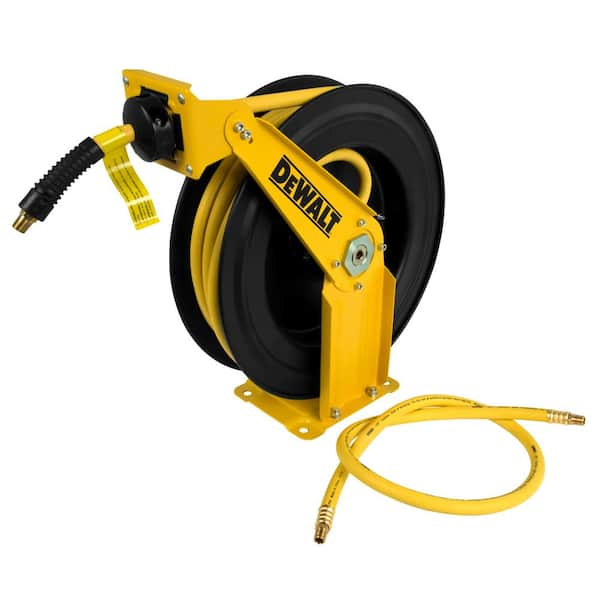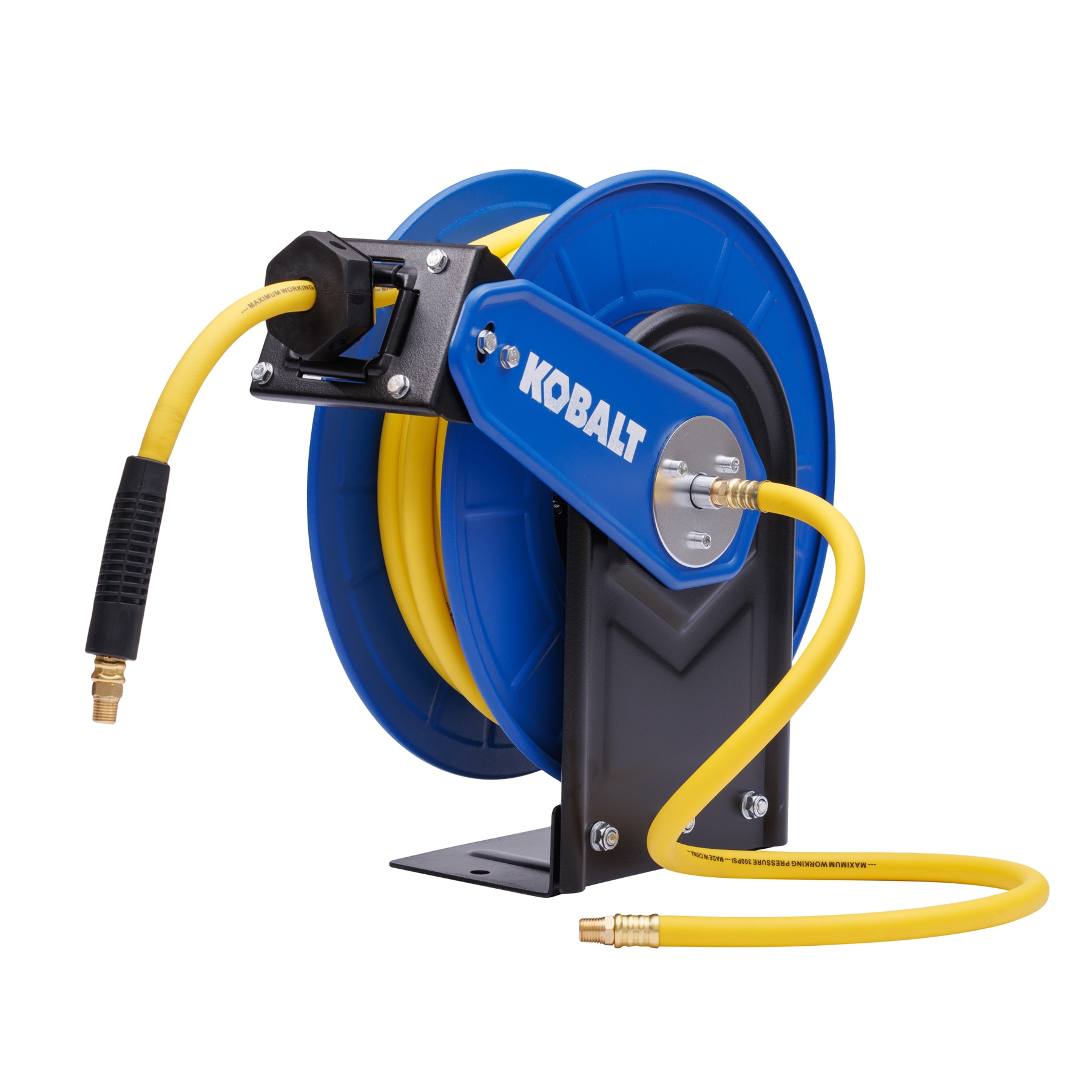When it comes to getting the best performance from your air compressor, the hose you choose plays a bigger role than you might think. You want a hose that’s reliable, durable, and fits your needs perfectly.
But with so many options out there, how do you know which air compressor hose is the real deal? You’ll discover exactly what makes an air compressor hose stand out, how to spot quality, and why picking the right one can save you time, money, and frustration.
Keep reading—you’re about to learn everything you need to make the smartest choice for your tools and projects.
Choosing The Right Hose
Choosing the right air compressor hose is key for safe and efficient work. A good hose fits your tool and the job perfectly. It also lasts longer and keeps air pressure steady. This guide helps you pick the best hose for your needs.
Types Of Air Compressor Hoses
Air compressor hoses come in several types. Rubber hoses are flexible and strong. They resist wear and handle high pressure well. PVC hoses are lighter and cheaper. They work best for light jobs and indoor use. Hybrid hoses mix materials to offer strength and flexibility. Coil hoses save space and reduce tangles. Choose the type based on your job and working conditions.
Material Comparisons
Hose material affects durability and ease of use. Rubber hoses resist heat, oil, and abrasion. They stay flexible in cold weather. PVC hoses are lighter but less durable. They can crack in cold or rough use. Hybrid hoses combine rubber and PVC benefits. Nylon hoses are very light and easy to handle. Match the material to your work environment and how often you use the hose.
Length And Diameter Considerations
Length affects reach and air pressure. Longer hoses reach far but lose pressure. Shorter hoses keep pressure high but limit movement. Diameter affects airflow. A wider hose delivers more air but is heavier. A smaller hose is lighter but may restrict air. Choose length and diameter based on your tool’s needs and work area size.

Credit: www.portlandcompressor.com
Installation Tips
Installing an air compressor hose correctly helps it last longer. It also keeps your work safe and efficient. Small mistakes can cause leaks or damage. Follow simple tips to make sure your hose works well and stays strong.
Proper Hose Connections
Connect the hose to the compressor tightly. Use the right fittings for your hose type. Avoid forcing connections that do not fit. Check for leaks by listening or using soapy water. Tighten connections if you find air escaping.
Avoiding Kinks And Twists
Do not bend the hose sharply. Sharp bends can cause cracks or weak spots. Lay the hose out straight before use. Twist the hose gently if needed, but avoid tight loops. Kinks block air flow and reduce performance.
Securing And Storing Hoses
Keep the hose off the ground to avoid dirt and damage. Use hooks or reels to hang the hose neatly. Store the hose in a cool, dry place away from sunlight. Proper storage stops the hose from cracking or getting stiff.
Maintenance Practices
Proper maintenance of your air compressor hose is key to long-lasting use. It prevents breakdowns and keeps your work smooth. Simple care steps can save money and time.
Regular Inspection Routines
Check the hose before and after each use. Look for cracks, leaks, or wear spots. Pay attention to the ends and connection points. Early detection stops bigger problems.
Cleaning Techniques
Keep the hose clean from dust and dirt. Use a soft cloth or brush to wipe it down. Avoid harsh chemicals that can damage the hose material. Clean hoses work better and last longer.
Repairing Minor Damages
Small cracks or holes need quick fixing. Use a patch kit designed for air hoses. Tighten loose fittings with a wrench. Fixing minor issues keeps the hose safe and reliable.

Credit: www.homedepot.com
Maximizing Efficiency
Maximizing efficiency in air compressor hose use saves energy and money. It also improves tool performance and work quality. Small changes can make a big difference. Focus on reducing air leaks, optimizing hose layout, and using the right accessories.
Reducing Air Leaks
Air leaks waste power and lower pressure. Check hoses and fittings regularly for cracks or holes. Tighten loose connections to stop leaks. Replace damaged hoses immediately. Use proper sealing tape on threaded parts. These steps keep air inside the system and boost efficiency.
Optimizing Hose Layout
Arrange hoses to avoid sharp bends and kinks. Long, twisted hoses reduce airflow and pressure. Keep hoses as straight and short as possible. Store hoses properly to prevent damage. A good layout reduces strain on the compressor and tools. It helps air flow smoothly for better results.
Using Accessories For Performance
Use hose reels to keep hoses tidy and untangled. Quick-connect fittings make tool changes fast and easy. Filters remove dirt and moisture, protecting tools and hoses. Pressure regulators keep airflow steady for consistent tool power. These accessories improve the overall system and save time.
Safety Considerations
Safety is very important when using air compressor hoses. These hoses carry high-pressure air that can be dangerous without proper care. Knowing the right safety steps helps avoid accidents and injuries. Follow these tips to handle air compressor hoses safely.
Pressure Ratings And Limits
Each air compressor hose has a pressure rating. This number shows the maximum air pressure the hose can safely hold. Never use a hose above its pressure limit. Overloading the hose can cause it to burst. Always check the hose label before use. Use hoses that match your air compressor’s pressure output.
Handling High-pressure Hoses
High-pressure hoses need careful handling. Avoid sharp bends or kinks that can weaken the hose. Keep the hose away from heat and chemicals. These can damage the hose material. Do not drag hoses on rough surfaces. Store hoses coiled loosely in a dry place. Regularly inspect hoses for cracks or leaks.
Personal Protective Equipment
Wear safety glasses to protect your eyes from air bursts. Gloves help protect hands from cuts and abrasions. Use ear protection if the compressor is loud. Wear sturdy shoes to prevent foot injuries. Personal protective equipment reduces risks when working with air hoses. Always use it to stay safe on the job.
Common Problems And Solutions
Air compressor hoses face common issues that affect their performance. Knowing these problems helps you keep your tools working well. Simple checks and fixes save time and money. Let’s explore common problems and how to solve them.
Identifying Hose Wear
Hoses wear out from use and weather. Look for cracks, cuts, or soft spots. These signs mean the hose might leak air. Check the entire hose length carefully. Worn hoses reduce air pressure and slow work.
Replace hoses showing deep damage. Small cracks can be sealed temporarily with tape. Regular inspection prevents unexpected failures during jobs.
Fixing Connection Issues
Loose or damaged connections cause air leaks. Check couplers and fittings for tightness. Use wrenches to secure loose parts. Replace worn or broken connectors immediately.
Clean connection points to remove dirt and debris. Dirty fittings do not seal properly. Good connections keep air flowing without loss.
Dealing With Moisture Buildup
Moisture inside hoses causes rust and clogs tools. Drain air tanks regularly to reduce water in hoses. Use moisture traps or filters to catch water.
Store hoses in dry places to avoid dampness. Dry hoses last longer and work better. Moisture control keeps your air compressor system reliable.
Upgrading And Replacing Hoses
Maintaining your air compressor hose is key to safe and efficient work. Over time, hoses wear out or lose performance. Upgrading or replacing hoses keeps your equipment running smoothly. It also prevents leaks and accidents.
Knowing when to replace and how to choose better hoses helps you get the most from your air compressor. Proper disposal protects the environment. Here are some points to guide you.
Signs It’s Time To Replace
Look for cracks, cuts, or holes on the hose surface. Air leaks or pressure drops show hose failure. Stiff or brittle hoses lose flexibility and may burst. Check fittings for rust or damage. Worn hoses can cause poor tool performance. Replace hoses that show these signs immediately.
Choosing Upgrades For Better Performance
Select hoses with stronger materials for durability. Lightweight hoses reduce user fatigue during long tasks. Choose hoses rated for higher pressure if needed. Consider hoses with better abrasion and heat resistance. Longer hoses increase reach but may reduce pressure. Match hose size and type to your specific air compressor and tools.
Disposal And Recycling Tips
Do not throw old hoses in regular trash. Many hoses contain materials that harm the environment. Check for local recycling programs accepting rubber or plastic hoses. Cut hoses into smaller pieces to ease recycling. Donate usable hoses to workshops or schools. Proper disposal keeps your workspace and community clean.

Credit: www.lowes.com
Frequently Asked Questions
What Is An Air Compressor Hose Used For?
An air compressor hose connects the compressor to tools and equipment. It safely transports compressed air. These hoses are flexible, durable, and resistant to pressure. They enable smooth operation of pneumatic tools like nail guns and spray painters.
How To Choose The Right Air Compressor Hose?
Choose a hose based on length, diameter, and material. Consider the hose’s maximum pressure rating and flexibility. PVC hoses are lightweight, rubber hoses offer durability. Match the hose size with your air compressor and tool requirements.
How To Maintain An Air Compressor Hose Properly?
Regularly check for cracks, leaks, or wear. Keep the hose clean and dry after use. Store it coiled in a cool, dry place away from sunlight. Proper care extends the hose’s lifespan and ensures safe operation.
Can I Use Any Hose With An Air Compressor?
Not all hoses are suitable for air compressors. Use hoses rated for high pressure and pneumatic use. Using the wrong hose can cause leaks or bursts, risking safety and equipment damage.
Conclusion
Choosing the right air compressor hose matters a lot. It affects how well your tools work. A strong, flexible hose lasts longer and keeps air flowing smoothly. Always check the hose material and size before buying. Proper care helps avoid leaks and damage.
Use the hose safely and store it properly after use. Good hoses make your work easier and safer. Keep these tips in mind for the best results every time.

